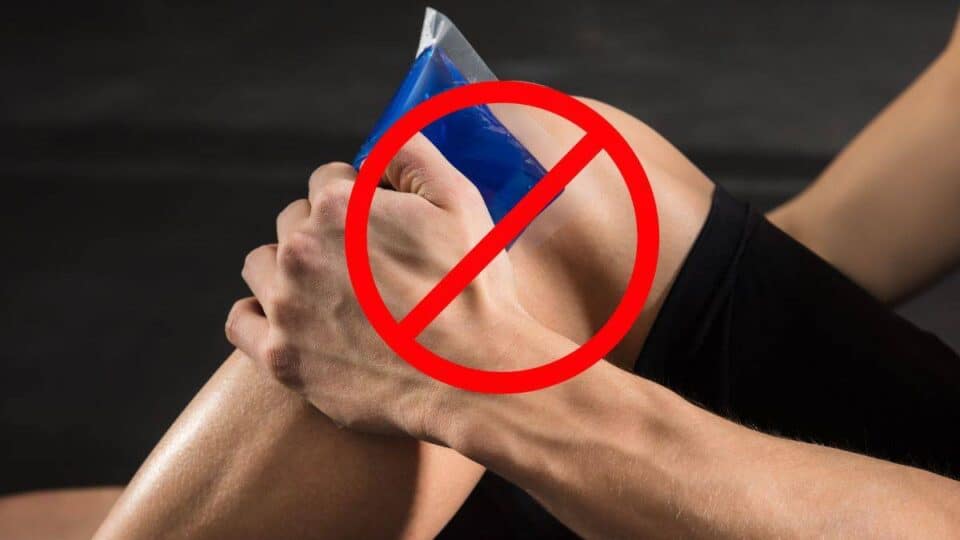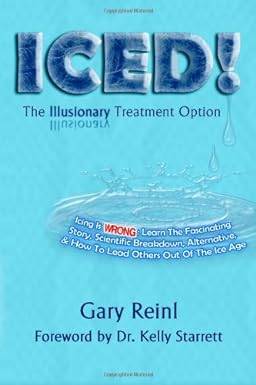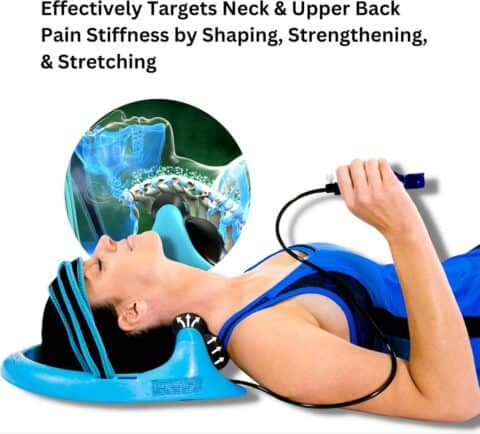Hey Folks! Dr. Mario Tolj here, and today we’re diving into the age-old question: heat or ice? When it comes to managing pain and promoting injury recovery, knowing when to reach for a heating pad or an ice pack can make all the difference. As a chiropractor with over a decade of experience, I’ve seen firsthand how understanding the proper use of these thermal therapies can significantly impact a patient’s healing journey. However, recent research has begun to challenge conventional wisdom surrounding the use of ice for injury recovery, suggesting that it may actually delay healing.
Key Takeaways
- Heat therapy is often more effective for pain relief and injury recovery than ice
- Research has challenged the conventional wisdom of using ice for injury recovery, suggesting it may delay healing
- Consult with a healthcare professional to determine the most appropriate treatment for your specific condition
Table of Contents
- The Great Debate: Heat vs. Ice for Pain Relief and Injury Recovery
- Understanding the Physiological Effects of Heat and Ice
- When to Use Heat
- The Controversy Surrounding Ice Therapy
- Proper Application Techniques for Heat
- The Role of Heat in Rehabilitation
- Listening to Your Body: When to Seek Professional Help
- FAQs
- Conclusion
The Great Debate: Heat vs. Ice for Pain Relief and Injury Recovery
Gary Reinl, author of “Iced! The Illusionary Treatment Option,” argues that icing can be detrimental to the healing process. He states, “Inflammation is your friend and a critical part of the body’s natural healing process, while ‘swelling’ is your foe.” Reinl goes on to explain that “icing does nothing more than delay the inflammatory process while often allowing for more ‘swelling’ to accumulate.”
So, let’s break down the science behind heat and ice and discover how to effectively incorporate them into your pain relief and recovery toolkit while also considering the latest evidence.
Understanding the Physiological Effects of Heat and Ice
Before we delve into the specifics of when to use heat or ice, it’s essential to grasp the physiological effects each modality has on our bodies:
Heat (Thermotherapy)
- Vasodilation: Heat encourages blood vessels to dilate, increasing blood flow to the targeted area
- Improved nutrient and oxygen delivery: Enhanced blood circulation brings more nutrients and oxygen to the injured tissue, promoting healing
- Muscle relaxation and increased flexibility: Warmth helps relax tense muscles and improves overall flexibility
Ice (Cryotherapy)
- Vasoconstriction: Ice causes blood vessels to constrict, reducing blood flow to the affected area
- Numbing effect: Cold temperatures numb pain receptors, providing temporary relief
Timing and Duration
The key to maximizing the benefits of heat therapy lies in understanding the importance of timing and duration. Generally, heat can be used for longer sessions, up to 30 minutes, However, it’s crucial to listen to your body and adjust accordingly. I have seen patients use heat for only 10 minutes and I have seen them use it for hours on end. At a certain point, there is book knowledge which is always debatable and then there is subjective feeling from each individual.
When to Use Heat
Heat therapy is a fantastic option for various types of pain and discomfort, including:
Chronic Pain and Stiffness
If you’re dealing with persistent pain or stiffness, particularly in conditions like osteoarthritis, heat can:
- Increase blood flow
- Reduce pain and stiffness
- Improve range of motion
Muscle Soreness and Tension
After an intense workout or a long day at the office, heat therapy can help:
- Relax tired, tense muscles
- Alleviate soreness
- Promote recovery
As Reinl points out, “Just always remember that your goal is to activate as many of the muscles around the damaged tissue as possible without causing any increased pain or damage. This is the only way to evacuate the otherwise trapped waste (swelling), and thus the faster that you are able to safely activate the largest number of nearby muscles, the faster the swelling will go away. It is simple ‘lymphatics.'”
Joint Pain and Arthritis
For those with joint pain or arthritis, heat can be a comforting and effective treatment option. It helps:
- Reduce pain and stiffness
- Improve joint mobility
- Enhance overall comfort
Contraindications and Precautions
While heat therapy is generally well-tolerated, there are some instances where it should be avoided, such as:
- Acute injuries
- Open wounds
- Areas with reduced sensation
- Certain cardiovascular conditions
The Controversy Surrounding Ice Therapy
In recent years, research has challenged the conventional wisdom surrounding the use of ice for injury recovery and pain relief. While it was once widely accepted that anti-inflammatory methods, such as over-the-counter medication and immediate icing of the affected area, were the best course of action, new evidence suggests that these practices may actually hinder the body’s natural healing process.
Studies from various reputable sources, including the Journal of Strength and Conditioning Research1, and the NCBI2, have found that topical cooling (icing) can delay recovery3 and that there is insufficient evidence to support its effectiveness in improving clinical outcomes.
In fact, a 2013 Journal of Strength and Conditioning Research article4 entitled “Topical Cooling (Icing) Delays Recovery from Eccentric Exercise-Induced Muscle Damage” stated, “These data suggest that topical cooling, a commonly used clinical intervention, appears to not improve but rather delay recovery from eccentric exercise-induced muscle damage.”
The University of Pittsburgh Medical Center5 even went as far as to state that ice may be detrimental to muscle recovery. These findings are not limited to research, as many professional athletes have begun to eschew traditional icing methods. In a 2008 Sports Illustrated article, two-time Cy Young Award winner Tim Lincecum revealed that he never uses ice after throwing.
This shift in thinking has been further explored in “ICED!” by Gary Reinl, which delves into the history of the “ice age” in professional athletics and the lack of peer-reviewed evidence supporting its use. Reinl’s book is a must-read for athletes, coaches, trainers, doctors, and therapists, as it sheds light on the importance of inflammation in the healing process and the difference between inflammation and swelling.
As Reinl explains, “Many people mistakenly believe that ‘swelling’ is inflammation. It is not. Swelling is simply the accumulation of fluid in a given area (for example, the site of an injury). This mistaken thought that ‘swelling’ is inflammation has caused widespread confusion. Indeed, this belief has negatively impacted the careers of many aspiring and accomplished athletes alike.”
Through his diverse experiences over the past four decades, Reinl has witnessed firsthand the rise and fall of icing in professional athletic training rooms and outpatient physical therapy clinics.
The book explains how the seemingly harmless act of icing has become the most common injury response tool worldwide, despite the lack of scientific evidence supporting its use. Reinl organizes and reports the facts surrounding icing, making a compelling case for why it not only fails to prevent swelling but also significantly harms the healing process.
As more people become aware of the potential drawbacks of icing, it is crucial to re-evaluate our approach to injury recovery and pain management. By understanding the body’s natural healing mechanisms and the role of inflammation, we can develop more effective strategies for promoting recovery and reducing pain without relying on outdated and potentially harmful practices like excessive icing.
Proper Application Techniques for Heat
To ensure the safe and effective use of heat therapy, follow these best practices:
Heating Pads and Moist Heat
- Use a low to medium setting to avoid burns
- Apply for 15-30 minutes at a time
- Moist heat (warm towels, baths) can be more effective than dry heat
Safety Precautions
- Never apply heat to open wounds or broken skin
- Be cautious when using heat therapy on areas with reduced sensation
- If pain worsens or persists, discontinue use and consult a healthcare professional
The Role of Heat in Rehabilitation
As a chiropractor, I often incorporate heat therapy into my patients’ treatment sessions to allow for proper blood flow to muscles, joints, ligaments, and fascia. Patients can feel the immediate difference after the session with an increased range of motion and less pain.
When the body is functioning properly as a whole unit then the pain signal will be turned off. It’s about treating the cause that’s signaling the symptoms not just masking symptoms. In light of recent research questioning the effectiveness of icing, it’s essential to focus on how we use heat in the rehabilitation process.
Physical Therapists and Thermal Therapy
Physical therapists may use heat to:
- Manage pain and inflammation
- Prepare tissues for manual therapy techniques
- Enhance the effects of exercise and stretching
Combining Heat Therapy with Other Techniques
Heat therapy can be highly effective when used in conjunction with:
- Exercise and stretching
- Manual therapy (massage, joint mobilization)
- Electrical stimulation (TENS, ultrasound)
The key is to find the right balance and use heat therapy in cases where it can promote healing and reduce pain. As Reinl notes, “When considering all of these facts, the old idiom of ‘walk it off’ is still, in principle, a very good idea. But, of course, I am not suggesting that you (always) literally walk it off. Instead, I am merely noting the need to activate the muscles around the damaged tissue in any way that you safely can.
In fact, I’ll even add in my adapted version: ‘Use your brain, never cause pain.'” Reinl is really stating that muscle activation is the best way to increase lymphatic drainage which is the body’s waste management system. This essentially promotes a more natural and faster way to healing. Why do you think you feel better and lighter on your feet when you do a proper regimen of exercises to the anatomical structure in question?
Tailoring Treatments to Individual Needs
The most important aspect of developing a personalized treatment plan is taking into account:
- The nature and severity of the injury or condition
- The patient’s overall health and lifestyle
- Specific goals and preferences
As healthcare professionals, we must be open to adapting our approaches based on the latest research and our patients’ unique needs.
Listening to Your Body: When to Seek Professional Help
While heat therapy can be helpful for managing pain and promoting recovery, there are times when it’s crucial to seek professional medical attention. Be on the lookout for:

Signs of a More Serious Injury
- Severe pain
- Significant swelling
- Visible deformity
- Inability to bear weight
- Persistent pain despite rest and self-care
The Importance of Personalized Advice
Everyone’s pain and recovery journey is unique. Consulting with a healthcare professional, such as a chiropractor or physical therapist, can help you:
- Receive an accurate diagnosis
- Develop a tailored treatment plan
- Monitor progress and make adjustments as needed
FAQs
Is it better to use moist heat or dry heat?
Moist heat, such as warm towels or baths, can be more effective than dry heat in penetrating deeper into the tissues and providing relief. However, both types of heat can be beneficial, so choose the one that works best for you.
How long should I apply heat to an injured area?
Generally, heat can be applied for longer sessions, up to 30 minutes at a time. However, it’s essential to listen to your body and adjust accordingly. If you experience any discomfort or worsening of symptoms, discontinue use and consult with a healthcare professional.
Can ice therapy delay the healing process?
Recent research suggests that icing may delay the natural healing process by interfering with beneficial inflammation. As Reinl states, “In many of these instances, the tissue damage was so severe that delaying the inflammatory response and decreasing the desperately needed circulation with ice would have been enormously problematic.”
How do I know if I should use heat or ice for my specific condition?
As a general rule, heat is more suitable for chronic pain, stiffness, and muscle tension, while ice is best for acute injuries, swelling, and inflammation. However, recent evidence challenges the effectiveness of icing for acute or chronic injury recovery. It’s always a good idea to consult with a healthcare professional for personalized advice based on your specific condition and needs.
Conclusion
The debate surrounding heat and ice therapy for pain relief and injury recovery has evolved in recent years. While ice has been the go-to treatment for decades, recent research suggests that it may actually delay healing and interfere with the body’s natural recovery process. On the other hand, heat therapy has been shown to be effective in promoting healing, reducing pain, and improving flexibility.
By listening to your body, consulting with healthcare professionals, and incorporating a well-rounded approach to recovery, you can effectively manage pain and promote healing.
As Reinl reminds us, “Unfortunately, some degree of this vastly inferior icing/stillness protocol is what most people undertake. They are told to ice and by the time that they move, it is far too late to ensure optimal healing. That reality is one of the things that I am truly hoping to change with this book because such a protocol is a travesty.”
If you have any lingering questions or concerns about managing pain or recovering from an injury, don’t hesitate to schedule a consultation with a trusted chiropractor. With the right guidance and support, you can overcome challenges and achieve your health and wellness goals.
- https://journals.lww.com/nsca-jscr/toc/2006/08000 ↩︎
- https://bjsm.bmj.com/content/58/Suppl_2/A93.2 ↩︎
- https://pubmed.ncbi.nlm.nih.gov/22820210/ ↩︎
- https://www.researchgate.net/publication/229436234_Topical_Cooling_Icing_Delays_Recovery_From_Eccentric_Exercise-Induced_Muscle_Damage ↩︎
- https://share.upmc.com/2016/02/using-ice-exercise/#:~:text=Muscles%20did%20not%20heal%20faster,Muscle%20strength ↩︎
Blog Disclaimer: The information provided on The BodyFix Chiro blog is for general informational and educational purposes only and is not intended as medical advice. These articles reflect our opinions and experiences but should not be used to diagnose or treat any health conditions. Always consult with your physician, chiropractor, or other qualified healthcare provider before starting any new treatment, exercise program, or making changes to your health routine. Any actions you take based on information from this blog are entirely at your own risk, and The BodyFix Chiro and its contributors disclaim any liability for the decisions you make based on this information.





